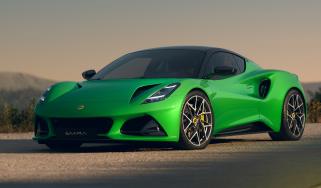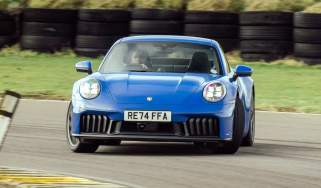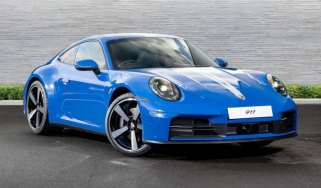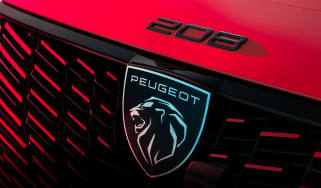Alfa Romeo 4C – the car world's greatest misses
It had stunning looks and promising hardware, but somehow the 4C didn’t add up to the sum of its parts
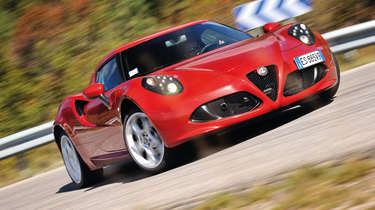
There are a few beaches on the Isles of Scilly in Cornwall that look like they could be in the Caribbean. The fine white sand is second cousin to caster sugar, tufts of Marram grass give a feeling of seclusion, and the crystal clear, turquoise water is spectacularly inviting. Which is why every year it is a rude awakening as toe meets shallows to discover that a 5mm wetsuit still feels entirely appropriate in August. It may look like St Lucia but the water is always frigid enough to shatter any illusions and remind you that you’re swimming on the other side of the Atlantic.
It’s the same every occasion I’ve walked up to an Alfa 4C. Some part of me thinks that maybe this time the driving experience will live up to the looks. Because the aesthetics really are spectacular; an Elise with more muscle and a touch more flair, a mini Italian supercar. Yes, the first miss was to replace the concept’s conventional front lights with weird items that look like an insect’s compound eyes, but overall it is a seriously seductive shape. Open the door and you also have the joy of seeing the weave of the beautiful carbon tub that weighs just 52kg. So exotic. So promising. Then that engine parps into life, the steering meets a camber and you experience the dynamic equivalent of an ice bath reaching your nether regions.
> Alfa Romeo Alfasud Sprint 6C - dead on arrival
We all wanted the 4C to be good when it turned up on eCoty in 2013. But it wasn’t. It came a resounding eighth out of eight. In fact the gap between seventh and first was probably smaller than that between seventh (the excellent 981-generation Cayman S) and eighth.
On paper there was nothing wrong with the 1.7-litre turbocharged four-cylinder engine and twin-clutch ’box, but the execution was all wrong. Outputs of 237bhp and 258lb ft were plenty in such a light car (even if the claimed 895kg dry weight might have been a little optimistic) but ‘Flatulent, laggy, lethargic’ were the words Dickie Meaden used to describe the delivery.
However, it was the steering that was the biggest disappointment. The promise of an unassisted rack in a world that was swiftly switching to EPAS was music to our ears at the time. But once again the reality was a let-down, not helped by a chunky, ugly wheel. ‘It certainly shows that good steering isn’t achieved just by dialling back the power assistance,’ said Jethro Bovingdon.
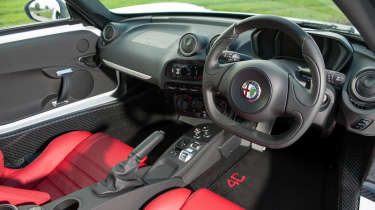
On a smooth road things were OK, but as soon as the suspension had to deal with the slightest bump the car seemed to take on a life of its own, even in a straight line. Had such things been around at the time we’d probably have likened it to an aggressive lane-keep assistance that you couldn’t turn off.
We tried the 4C again in subsequent years, both as a Spider and without the optional Sport chassis, but always got out deflated. Even on track, where you might think it would all come good, the 4C failed to shine, with understeer and oversteer both in unpredictable abundance, sometimes in the same corner.
Some point accusing fingers at the geometry of the front suspension, others flag the MacPherson-strut rear as the main culprit of its problems. Its overall weight was definitely more than that tub promised. But really it always felt like the tantalisingly bella 4C was let down by a whole host of factors. And to rub salt in the wound, four years later Alpine’s A110 would come along and show Alfa how it should have been done in the first place.
This story first featured in evo issue 319.

